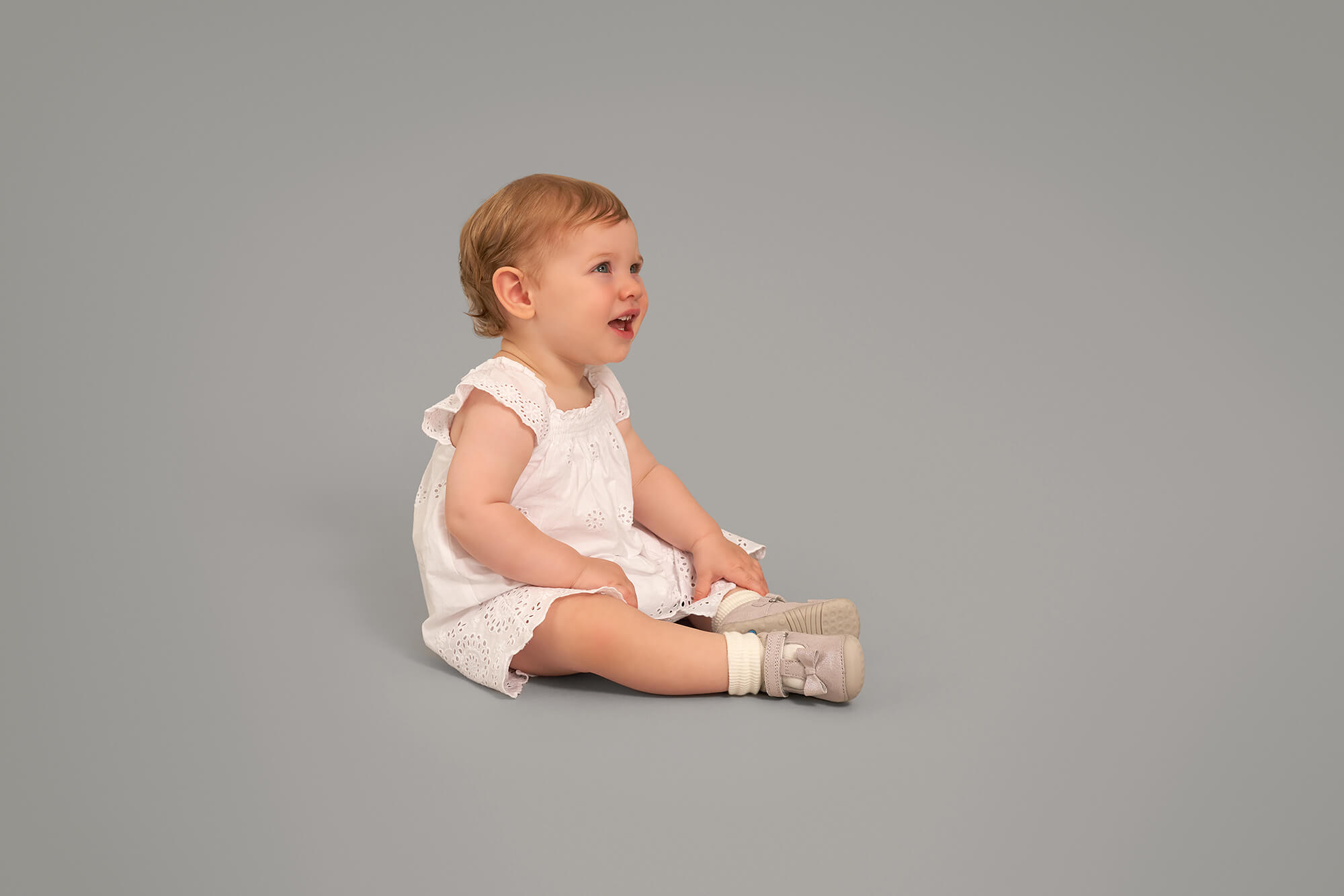
It’s hard to imagine that one day babies feet will become fully functioning mechanisms propelling the body forward. Mastering all the crucial development stages from crawling and walking to running, jumping and playing along the way.
The first 13 years of childhood are critical for feet – this is when they are developing at their quickest. That’s over 4,500 days of growing and each foot is busy fine tuning its 26 bones, 33 joints, 100 plus tendons, muscles, and ligaments, 7,000 nerve endings, and a whopping 250,000 sweat glands! All of which need looking after to promote and encourage healthy foot development, particularly at a young age.
Here’s our top tips on healthy foot care for little feet…
1. Not so ‘squeezy’ does it
Make sure that all footwear, including trainers, are properly fitted and ideally include wiggle room into the fit. This will allow not only their feet, but their whole body to develop naturally and be as biomechanically efficient as it can be. This is even more critical with baby feet where their soft cartilage can easily be manipulated by ill-fitting shoes.
2. Keep socks comfy
Get socks that fit. In very young children, if socks are too tight, they will cramp the foot, restrict the blood supply and can compromise natural development. If socks are too big, they can bunch up and cause blisters.
3. Don’t put your foot in it
Don't hand shoes down from one child to another - no two pairs of feet are ever the same shape or size and shoes can mould to a child’s foot form and wear out to match their gait. Handing shoes down can cause problems with the new wearer.
4. Trim talk
Always trim toenails straight across and not too short - don't curve them because this can encourage in-growing toenails.
5. Jump to it
Encourage being active from a young age as this will significantly improve your child’s coordination and mechanical development.
6. Breathe easy
Choose shoes with breathable linings such as leather or microfibre to allow feet to breathe. This is particularly important when you are choosing school shoes and shoes for older children.
7. The right fit
Ensure you measure your child’s feet regularly, every six to eight weeks. Not all children will continually grow this quickly, but a growth spurt can go undetected and catch you off guard. Shoes that are too small can constrict important foot development.
For further information around foot health and development or to view our new spring collection click HERE